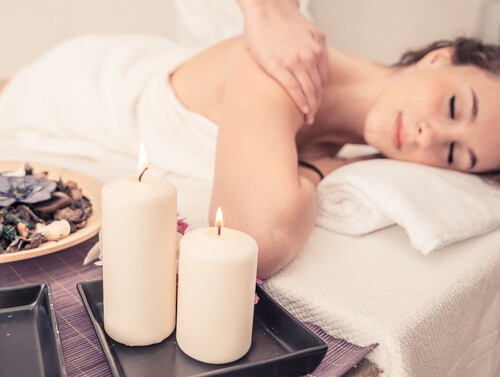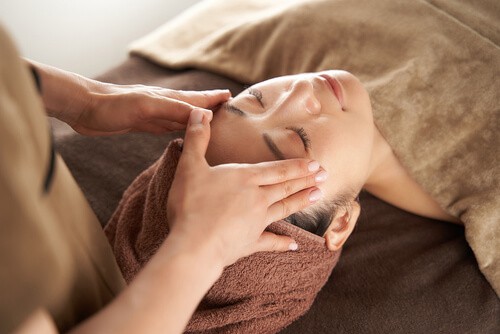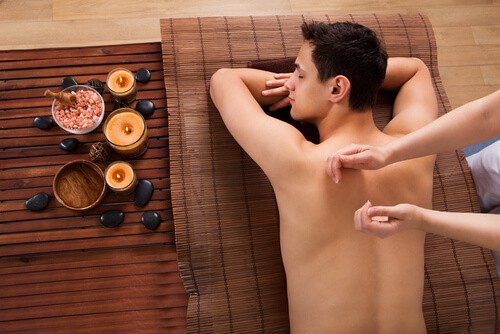Here’s a guide to shiatsu massage in Japan. Find out about the origin and techniques of shiatsu massage in Japan. And we’ve also curated a list of shiatsu massage locations in Japan.
Delve into the restorative world of shiatsu massage in Japan, a practice where tradition meets healing touch. Explore its historical origins, the precise techniques that define it, and the best locations to experience authentic shiatsu.
Our guide will help you understand and enjoy the profound benefits of this revered Japanese therapy.

Shiatsu Massage In Japan
Origin Shiatsu Massage in Japan
Shiatsu has gained immense appreciation as it is practiced in many forms across the world. Its origin is believed to have been traced during the Han Dynasty in ancient China.
During the 7th century Japanese students were sent to China to study about medicine and their culture.
During this healing techniques like Jujitsu and Martial arts were gaining much popularity in Japan which eventually resulted in the evolution of a massage technique called Anma, which was normally performed by blind people and was found to be very relaxing.
Based on the principles of Anma, the great Tamai Tempaku developed Shiatsu massage in the early 20th century.
In the year 1919, he published his book ‘Shiatsu Ho’ and by 1955 Shiatsu had been approved as a legal form of therapy under Anma massage.
Tokujiro Namikoshi, and Shizuto Masunaga, are two notable people who deserve credit in the history of Shiatsu massage.
They have contributed some major findings towards the evolution of this technique that we know and love today.
Tokujiro came upon this technique by trial and error method as his mother had suffered from severe rheumatoid arthritis in many joints and arthritis in the knee.
Since there wasn't medicine available, his siblings and him used to massage her to help relieve the pain. While massaging his mother, he noticed how a few pressing methods and different pressure levels were making her feel much better.
Gradually, when he saw his mother completely healed, he knew he was performing the art of Shiatsu massage.
In 1925, Tokujiro established the Shiatsu Institute of Therapy in Hokkaido, and in 1940, the Shiatsu Institute in Tokyo was opened. Both schools were recognised by the Ministry of Health and Welfare.
During his time, Shiatsu was a vigorous massage form which included several stretching exercises, focusing on the overall body of the person seeking the therapy and in-depth knowledge of the neuro-muscular points in the human body.
Shiatsu received worldwide popularity around the 1950s after it was recognised as a legal form of therapy.
Shizuto Masunaga, was a student of Western psychology and Chinese medicine. He worked towards bringing Shiatsu back to its traditional form of creating a harmonious channel to help the energy flow without any blockages by balancing the Five elements in the body.
Shizuto had established Tokyo’s Iokai Shiatsu Center in the late 20th century and his techniques of this massage form started gaining popularity all across Japan, US and Europe.

Shiatsu Massage Techniques In Japan
Today, practitioners from around the world are still evolving new approaches to Shiatsu massage. Some concentrate on acupressure and acupuncture points, while others focus on the pathways of energy to influence the Ki that flows in the body. The most common techniques include:
- Zen Shiatsu:
This technique was developed by Shizuto Masunaga and revolves around the concept of full and empty or Yin and Yang.
A Practitioner focuses more on acupressure points and makes use of their hands, elbows, knees, fists and palms to release any energy from those points.
- Five Element Shiatsu
This concept uses the paradigm of the Five Phase or Elements theory to identify patterns of disharmony in a person’s body-mind-spirit and how to balance those patterns through the right treatment.
All aspects of the client’s emotional, lifestyle, physical, psychological factors are important. A therapist helps the client work on the self and others through a compassionate yet neutral viewpoint.
- Movement Shiatsu
This technique was developed in the 1980s by Bill Palmer. It helps the client to focus on the areas of ability rather than focusing on their problems.
A therapist will use different guided experiments and forms of touch to help a person to explore their energy patterns and to sense which parts of their body are not integrated.
- Barefoot Shiatsu
Here the practitioner uses the feet and entire body to apply stronger and more sustained pressure for a deep relaxation. It includes a variety of powerful yoga-like stretches to help unwind any kind of tightness and stiffness.
You need to lie down while the practitioner walks on your back while applying pressure and keeping balance using a pole. This Yang style is dynamic and vigorous and after such a session, you will literally feel the tension has ‘melted away‘ and become more relaxed.
- Healing Shiatsu
This technique is developed by Sonia Moriceau Sensei, who integrates the principles of Zen Shiatsu to bring an approach based on non-invasive touch and deep listening fostered through the practice of meditation and mindfulness.
A practitioner allows you to enter into a deep state of relaxation and creates a space where healing can occur on both a physical or psychological level.
- Namikoshi Shiatsu
This is the official Shiatsu of Japan with the founder Tokujiro Namikoshi, who found that when you touch the surface of the body, it reflexes to the internal organs, releasing blockages and thus stimulates the body’s own healing power.

Shiatsu Massage Locations in Japan
Shiatsu massages are a great way not only to refresh the body and soul but also the perfect way to pamper yourself.
Now you can melt away the soreness of the muscles and alleviate any aches and pains from working, or traveling. Get ready to de-stress, and add these stops to your Japan travel itinerary:
Aman Spa, Tokyo:
Aman Tokyo Spa is a part of the beautiful modern hotel at the Otemachi Tower in Tokyo. It offers guests a range of natural therapies and treatments using Japanese remedies and techniques to ensure deep relaxation and stress relief including Shiatsu massages that boost wellness and the immune system.
Kadan Spa, Gora Kadan:
Kadan Spa, located at Kanagawa, helps day-trip visitors and guests to relax with unique and luxurious spa treatments and a wide selection of massages to choose from including a Shiatsu massage to help loosen the muscles and provide relief from stress and fatigue.
Hiyoshido, Kyoto:
This gem of a Shiatsu massage center is hidden in the nooks of Kyoto. Your practitioner will customize your session according to your needs. So, if you want to seek immediate relief after a long and stressful day or from a tiring hike, then you can book an appointment here.
Mandarin Oriental, Tokyo:
The beautiful spa center in the Mandarin Oriental offers their guests three programs with Shiatsu massages:
- Totally Tokyo: This treatment takes around one hour and thirty minutes and takes one on a peaceful journey to establish a tranquil state of mind.
- Sakura Ritual: This treatment takes around three hours and consists of a combination between a Shiatsu massage and Thai massage. The practitioner begins by washing your feet, treating you with an Azuki bean scrub and an all-body Kiatsu.
- Kiatsu: This treatment takes around one hour and thirty minutes where you can enjoy a full body massage with a combination of both a Shiatsu massage and Thai massage and relaxes all muscles with stretching and movements.

Shiatsu Massage In Japan: FAQs
Is a Shiatsu massage very painful?
No, not at all. This massage technique focuses on providing specific pressure on different areas of the body. However, the practitioner may apply more pressure on certain areas. Some people even experience Delayed onset muscle soreness or DOMS for twenty hours after the session.
What’s the difference between Aashiatsu and Shiatsu massage?
Both Ashiatsu and Shiatsu originate from Japan and share the same pressure technique and influences from ancient Chinese medicine. They differ in how the therapist applies the amount of pressure on their clientsAshi means foot and Shi means finger. Ashiatsu, is also called barefoot massage, which involves using bare feet to apply strokes, and deep compression. Both messages aim to energize, restore or stabilize energy channels.
Takeaway:
Today, you can find this massage treatment as a popular alternative healing technique in a world full of modern medicines. So, what are you waiting for? Pamper yourself and indulge yourself in a session.
Trust me, when I say that a Shiatsu massage is tailored to be both a relaxation and a deep tissue treatment and provides you also with therapeutic holistic health benefits.
Do not worry, as your practitioner will conduct the session and apply pressure according to your needs, requirements, in serenity and comfort.
Also Read




